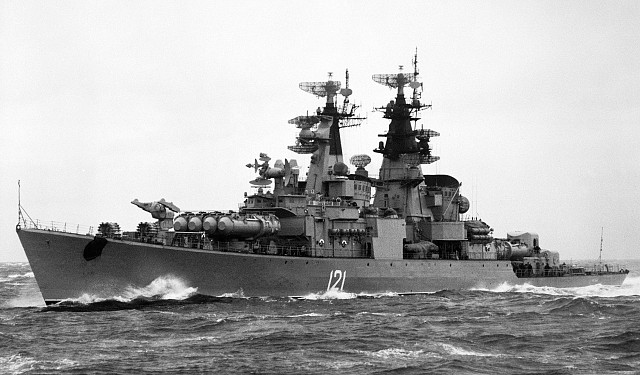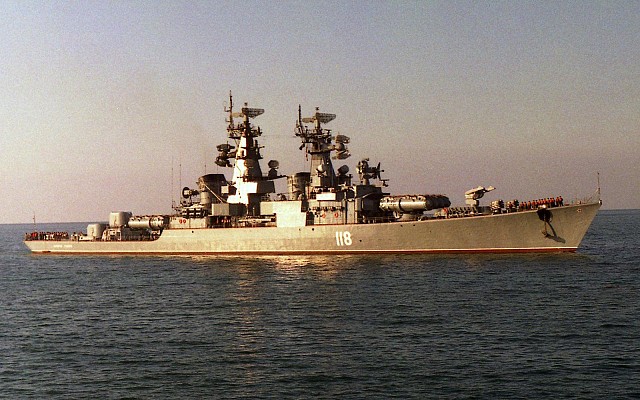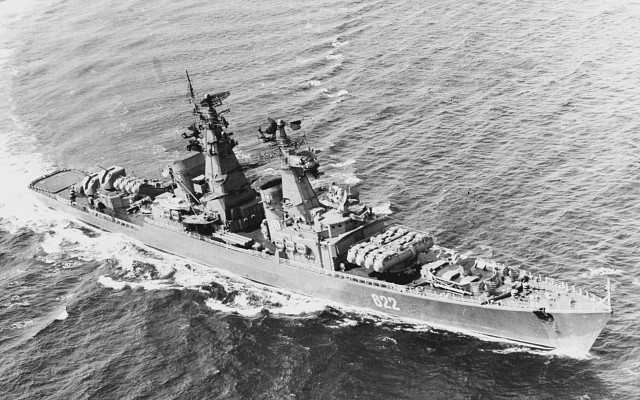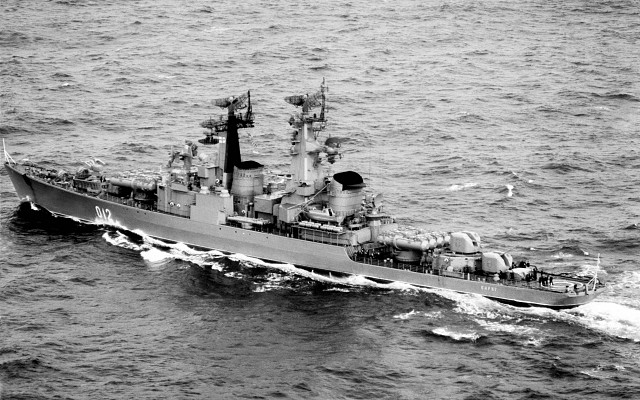Project 58 Grozny class
NATO: Kynda class
Overview

Project 58 class
Soviet navy Project 58 (NATO: Kynda) class cruiser at sea.
Source: US Navy -
© Public domain
Kynda class (NATO reporting name)
Grozny class (lead ship)
Description
Introduction
The Project 58 class is an early Cold War era class of Soviet cruisers. They were developed for use in the anti-ship role. In the West these ships were known under the NATO reporting name "Kynda". The design proved not very effective, being top heavy. Of the 10 ships planned only 4 were completed. It was soon supplemented by the Project 1134 Berkut (NATO: Kresta I) class.
Layout
The Project 58 is a classic Cold War era Soviet rocket cruiser with the odd feature of having a large trainable four round SM-70 missile launcher forward and aft. A large sensor mast is fitted in front of each funnel. The twin arm SAM launcher of the M-1 Volna system is mounted forward and the two gun turrets at the rear. A helicopter deck allows a Ka-25PL anti-submarine helicopter to be carried.
Firepower
The main armament consist of two trainable four round launchers for the P-35 Progress (NATO: SS-N-3 Shaddock) surface to surface missile, with a total of 16 missiles carried. Additionally two twin 76mm AK-726 dual purpose turrets are fitted. Air defense is provided by a single twin round M-1 Volna (SA-N-1 Goa) launcher with 16 missiles. To augment self-defense four 30mm AK-630 close-in weapon systems were added in the 1980's. Anti-submarine weapons include two tripple 533mm torpedo launchers and two RBU-6000 ASW rocket launchers.
Sensors
Sensor systems include a MR-302 surface search radar, MR-500 air search radar and GAS-372 hull mounted sonar. Additionally ECM equipment, navigation radar and fire control radars are fitted.
Mobility
The Kynda class is steam powered and features four boilers and two turbines that power two shafts. The 100.000 hp provides a maximum speed of 35 kt and maximum range of 7.000 nm at 15 kt.
Users
The Kynda class was only used by the USSR. A total of four ships were produced. It was supplemented by the Kresta I class which features a near similar armament but has better sea going capability and sensor systems.





